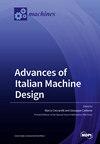使用涂层硬质合金刀具评估加工变量对镍合金 Inconel 718 加工性的影响
IF 2.1
3区 工程技术
Q3 ENGINEERING, ELECTRICAL & ELECTRONIC
引用次数: 0
摘要
目前的研究工作旨在对使用不同涂层刀具对 Inconel 718 进行微铣削时的刀具磨损、表面粗糙度和毛刺形成情况进行实验检测。Inconel 718 具有高强度和耐腐蚀性等优越的机械和物理性能,是用途最广泛的材料之一。另一方面,Inconel 718 的加工也带来了一定的可加工性挑战,这大大增加了刀具磨损,进而导致表面粗糙度增加。切削速度、进给量和切削深度被选为可变的加工输入。在刀具磨损方面,发现所有输入变量都有显著影响,其中刀具涂层的贡献率最高,达到 36.19%。在表面粗糙度方面,切削速度和刀具涂层被确定为有效的输入参数,贡献率分别为 51.24% 和 34.27%。同样,切削深度被证明是毛刺高度形成的一个影响因素(在上铣和下铣中均是如此),而进给量在上铣和下铣中对毛刺宽度形成的贡献率最高,分别为 39.28% 和 36.26%。因此,在重要参数之间绘制了输出响应等高线图,以分析可加工性。其中一项重要的研究成果是确定了一个刀具涂层参数,该参数对毛刺形成的所有四个分析方面都很重要。此外,还为加工响应制定了回归方程。从主效应图中确定的各个输入参数的最佳和最差情况在确认性实验中得到了验证。此外,还利用特写图像描述了输入变量对输出响应的影响,并确定了主要的磨损机制。通过优化生产过程的可持续性和生产率,强调了这项研究的实用性。本文章由计算机程序翻译,如有差异,请以英文原文为准。
Evaluation of Machining Variables on Machinability of Nickel Alloy Inconel 718 Using Coated Carbide Tools
The current work was undertaken with the research aim of experimental examination of tool wear, surface roughness and burr formation during the micro-milling of Inconel 718 using different coated tools. Inconel 718 is one of the most widely used materials for purpose-oriented utilization owing to its preferred mechanical and physical properties, including high strength and corrosion resistance. On the opposite end, the machining of Inconel 718 poses certain machinability challenges, which significantly elevates tool wear and subsequently surface roughness. Cutting speed, feed rate and depth of cut were selected as variable machining inputs. With reference to tool wear, all input variables were found to be significant, with tool coating having the highest contribution ratio of 36.19%. In case of surface roughness, cutting speed and tool coating were identified as effective input parameters with contribution ratios of 51.24% and 34.27%, respectively. Similarly, depth of cut proved to be an influential factor for burr height formation (in both up-milling and down-milling), whereas feed rate had the highest contribution ratios for burr width formation during up-milling and down-milling, i.e., 39.28% and 36.26%, respectively. Consequently, contour plots for output responses were drawn between significant parameters to analyze machinability. One of the vital research outcomes was the identification of a tool coating parameter that is significant for all four analyzed aspects of burr formation. In addition, regression equations were formulated for machining responses. The best- and worst-case scenarios for individual input parameters, as identified from main effects plots, were validated during confirmatory experimentation. Moreover, effects of input variables on output response were characterized using close-up imagery, and dominant wear mechanisms were also identified. The utility of the research is underlined by the optimization of the sustainability and productivity of the manufacturing process.
求助全文
通过发布文献求助,成功后即可免费获取论文全文。
去求助
来源期刊

Machines
Multiple-
CiteScore
3.00
自引率
26.90%
发文量
1012
审稿时长
11 weeks
期刊介绍:
Machines (ISSN 2075-1702) is an international, peer-reviewed journal on machinery and engineering. It publishes research articles, reviews, short communications and letters. Our aim is to encourage scientists to publish their experimental and theoretical results in as much detail as possible. There is no restriction on the length of the papers. Full experimental and/or methodical details must be provided. There are, in addition, unique features of this journal: *manuscripts regarding research proposals and research ideas will be particularly welcomed *electronic files or software regarding the full details of the calculation and experimental procedure - if unable to be published in a normal way - can be deposited as supplementary material Subject Areas: applications of automation, systems and control engineering, electronic engineering, mechanical engineering, computer engineering, mechatronics, robotics, industrial design, human-machine-interfaces, mechanical systems, machines and related components, machine vision, history of technology and industrial revolution, turbo machinery, machine diagnostics and prognostics (condition monitoring), machine design.
 求助内容:
求助内容: 应助结果提醒方式:
应助结果提醒方式:


